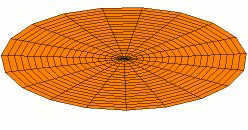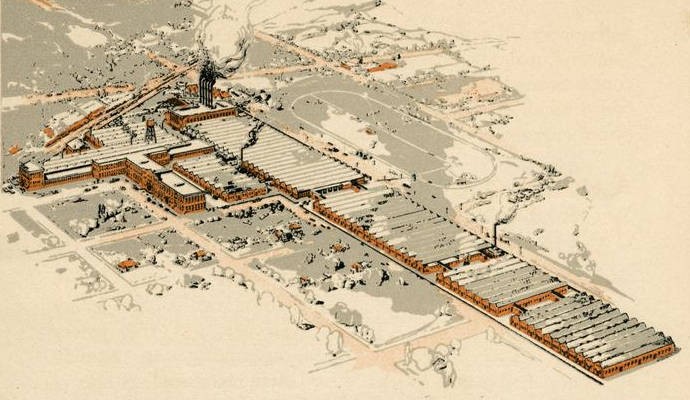|
Vibratory Feeder
A vibrating feeder or vibratory feeder is an industrial machine used to feed material to a process or machine. Vibratory feeders use both vibration and gravity to move material. They are mainly used to transport a large number of smaller objects. Gravity determines the direction of movement; either downwards, or down and towards one side. Vibration is used to move the material. A beltweigher is typically used to measure the material flow rate. A weigh feeder can measure and regulate the flow rate by varying the belt conveyor speed. Vibratory bowl feeders are also used for automatic feeding of small to large and differently shaped industrial parts. Industrial applications Vibratory feeders are used for automating high-speed production lines and assembly systems in various industrial sectors, including: * Pharmaceutical * Automotive * Electronic * Food processing * Fast Moving Consumable Goods (FMCG) * Packaging * Metal working * Glass * Foundry * Steel * Construction * Recycling ... [...More Info...] [...Related Items...] OR: [Wikipedia] [Google] [Baidu] |
Machine
A machine is a physical system that uses power to apply forces and control movement to perform an action. The term is commonly applied to artificial devices, such as those employing engines or motors, but also to natural biological macromolecules, such as molecular machines. Machines can be driven by animals and people, by natural forces such as wind and water, and by chemical, thermal, or electrical power, and include a system of mechanisms that shape the actuator input to achieve a specific application of output forces and movement. They can also include computers and sensors that monitor performance and plan movement, often called mechanical systems. Renaissance natural philosophers identified six simple machines which were the elementary devices that put a load into motion, and calculated the ratio of output force to input force, known today as mechanical advantage. Modern machines are complex systems that consist of structural elements, mechanisms and contr ... [...More Info...] [...Related Items...] OR: [Wikipedia] [Google] [Baidu] |
Vibration
Vibration () is a mechanical phenomenon whereby oscillations occur about an equilibrium point. Vibration may be deterministic if the oscillations can be characterised precisely (e.g. the periodic motion of a pendulum), or random if the oscillations can only be analysed statistically (e.g. the movement of a tire on a gravel road). Vibration can be desirable: for example, the motion of a tuning fork, the reed in a woodwind instrument or harmonica, a mobile phone, or the cone of a loudspeaker. In many cases, however, vibration is undesirable, wasting energy and creating unwanted sound. For example, the vibrational motions of engines, electric motor An electric motor is a machine that converts electrical energy into mechanical energy. Most electric motors operate through the interaction between the motor's magnetic field and electric current in a electromagnetic coil, wire winding to gene ...s, or any Machine, mechanical device in operation are typically unwanted. ... [...More Info...] [...Related Items...] OR: [Wikipedia] [Google] [Baidu] |
Gravity
In physics, gravity (), also known as gravitation or a gravitational interaction, is a fundamental interaction, a mutual attraction between all massive particles. On Earth, gravity takes a slightly different meaning: the observed force between objects and the Earth. This force is dominated by the combined gravitational interactions of particles but also includes effect of the Earth's rotation. Gravity gives weight to physical objects and is essential to understanding the mechanisms responsible for surface water waves and lunar tides. Gravity also has many important biological functions, helping to guide the growth of plants through the process of gravitropism and influencing the circulation of fluids in multicellular organisms. The gravitational attraction between primordial hydrogen and clumps of dark matter in the early universe caused the hydrogen gas to coalesce, eventually condensing and fusing to form stars. At larger scales this results in galaxies and clust ... [...More Info...] [...Related Items...] OR: [Wikipedia] [Google] [Baidu] |
Beltweigher
A beltweigher or belt weigher, more commonly known as a belt scale, is a piece of industrial control equipment used to measure the mass and flow rate of bulk material traveling over a conveyor belt. Invented by Herbert Merrick in the early 1900's, belt weighers are commonly used in plants and heavy industries, such as mining. Belt weighers replace a short section of the support mechanism of the belt, which might be one or more sets of idler rollers, or a short section of channel or plate. This weighed support is mounted on load cells, either pivoted, counterbalanced or not, or fully suspended. The mass measured by the load cells is integrated with the belt speed to compute the mass of material moving on the belt, after allowing for the mass of the belt itself. Belt weighers generally include the necessary electronics to perform this calculation, often in the form of a small industrialized microprocessor A microprocessor is a computer processor (computing), processor ... [...More Info...] [...Related Items...] OR: [Wikipedia] [Google] [Baidu] |
Automotive Industry
The automotive industry comprises a wide range of company, companies and organizations involved in the design, Business development, development, manufacturing, marketing, selling, Maintenance, repairing, and Custom car, modification of motor vehicles. It is one of the world's largest industry (economics), industries by revenue (from 16% such as in France up to 40% in countries such as Slovakia). The word ''automotive'' comes from the Greek language, Greek ''autos'' (self), and Latin ''motivus'' (of motion), referring to any form of self-powered vehicle. This term, as proposed by Elmer Ambrose Sperry, Elmer Sperry (1860–1930), first came into use to describe automobiles in 1898. History The automotive industry began in the 1860s with hundreds of manufacturers pioneering the Brass Era car, horseless carriage. Early car manufacturing involved manual assembly by a human worker. The process evolved from engineers working on a stationary car to a conveyor belt system where the ... [...More Info...] [...Related Items...] OR: [Wikipedia] [Google] [Baidu] |
Packaging
Packaging is the science, art and technology of enclosing or protecting products for distribution, storage, sale, and use. Packaging also refers to the process of designing, evaluating, and producing packages. Packaging can be described as a coordinated system of preparing goods for transport, warehousing, logistics, sale, and end use. Packaging contains, protects, preserves, transports, informs, and sells. In many countries it is fully integrated into government, business, institutional, industrial, and for personal use. ''Package labeling'' (American English) or ''labelling'' (British English) is any written, electronic, or graphic communication on the package or on a separate but associated label. Many countries or regions have regulations governing the content of package labels. Merchandising, branding, and persuasive graphics are not covered in this article. History of packaging Ancient era The first packages used the natural materials available at the time: baskets of ... [...More Info...] [...Related Items...] OR: [Wikipedia] [Google] [Baidu] |
Metalworking
Metalworking is the process of shaping and reshaping metals in order to create useful objects, parts, assemblies, and large scale structures. As a term, it covers a wide and diverse range of processes, skills, and tools for producing objects on every scale: from huge ships, buildings, and bridges, down to precise engine parts and delicate jewellery. The historical roots of metalworking predate recorded history; its use spans cultures, civilizations and millennia. It has evolved from shaping soft, native metals like gold with simple hand tools, through the smelting of ores and hot forging of harder metals like iron, up to and including highly technical modern processes such as machining and welding. It has been used as an industry, a driver of trade, individual hobbies, and in the creation of art; it can be regarded as both a science and a craft. Modern metalworking processes, though diverse and specialized, can be categorized into one of three broad areas known as forming, cutt ... [...More Info...] [...Related Items...] OR: [Wikipedia] [Google] [Baidu] |
Foundry
A foundry is a factory that produces metal castings. Metals are cast into shapes by melting them into a liquid, pouring the metal into a mold, and removing the mold material after the metal has solidified as it cools. The most common metals processed are aluminum and cast iron. However, other metals, such as bronze, brass, steel, magnesium, and zinc, are also used to produce castings in foundries. In this process, parts of desired shapes and sizes can be formed. Foundries are one of the largest contributors to the manufacturing recycling movement, melting and recasting millions of tons of scrap metal every year to create new durable goods. Moreover, many foundries use sand in their molding process. These foundries often use, recondition, and reuse sand, which is another form of recycling. Process In metalworking, casting involves pouring liquid metal into a mold, which contains a hollow cavity of the desired shape, and then allowing it to cool and solidify. The solidified pa ... [...More Info...] [...Related Items...] OR: [Wikipedia] [Google] [Baidu] |
Steel
Steel is an alloy of iron and carbon that demonstrates improved mechanical properties compared to the pure form of iron. Due to steel's high Young's modulus, elastic modulus, Yield (engineering), yield strength, Fracture, fracture strength and low raw material cost, steel is one of the most commonly manufactured materials in the world. Steel is used in structures (as concrete Rebar, reinforcing rods), in Bridge, bridges, infrastructure, Tool, tools, Ship, ships, Train, trains, Car, cars, Bicycle, bicycles, Machine, machines, Home appliance, electrical appliances, furniture, and Weapon, weapons. Iron is always the main element in steel, but other elements are used to produce various grades of steel demonstrating altered material, mechanical, and microstructural properties. Stainless steels, for example, typically contain 18% chromium and exhibit improved corrosion and Redox, oxidation resistance versus its carbon steel counterpart. Under atmospheric pressures, steels generally ... [...More Info...] [...Related Items...] OR: [Wikipedia] [Google] [Baidu] |
Construction
Construction are processes involved in delivering buildings, infrastructure, industrial facilities, and associated activities through to the end of their life. It typically starts with planning, financing, and design that continues until the asset is built and ready for use. Construction also covers repairs and maintenance work, any works to expand, extend and improve the asset, and its eventual demolition, dismantling or wikt:decommission, decommissioning. The construction industry contributes significantly to many countries' gross domestic products (Gross domestic product, GDP). Global expenditure on construction activities was about $4 trillion in 2012. In 2022, expenditure on the construction industry exceeded $11 trillion a year, equivalent to about 13 percent of global Gross domestic product, GDP. This spending was forecasted to rise to around $14.8 trillion in 2030. The construction industry promotes economic development and brings many non-monetary benefits to many cou ... [...More Info...] [...Related Items...] OR: [Wikipedia] [Google] [Baidu] |
Recycling
Recycling is the process of converting waste materials into new materials and objects. This concept often includes the recovery of energy from waste materials. The recyclability of a material depends on its ability to reacquire the properties it had in its original state. It is an alternative to "conventional" waste disposal that can save material and help lower greenhouse gas emissions. It can also prevent the waste of potentially useful materials and reduce the consumption of fresh raw materials, reducing energy use, air pollution (from incineration) and water pollution (from landfilling). Recycling is a key component of modern waste reduction and represents the third step in the "Reduce, Reuse, and Recycle" waste hierarchy, contributing to environmental sustainability and resource conservation. It promotes environmental sustainability by removing raw material input and redirecting waste output in the economic system. There are some ISO standards related to recycling, su ... [...More Info...] [...Related Items...] OR: [Wikipedia] [Google] [Baidu] |







